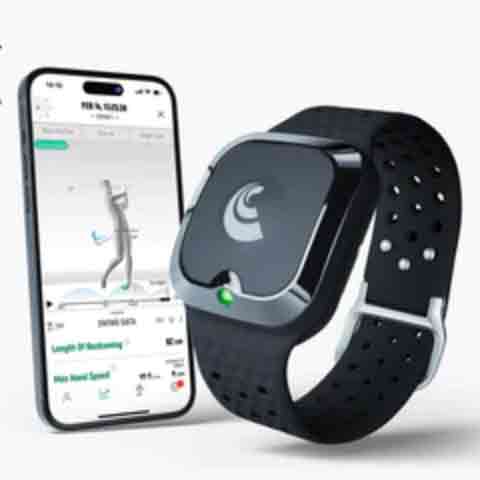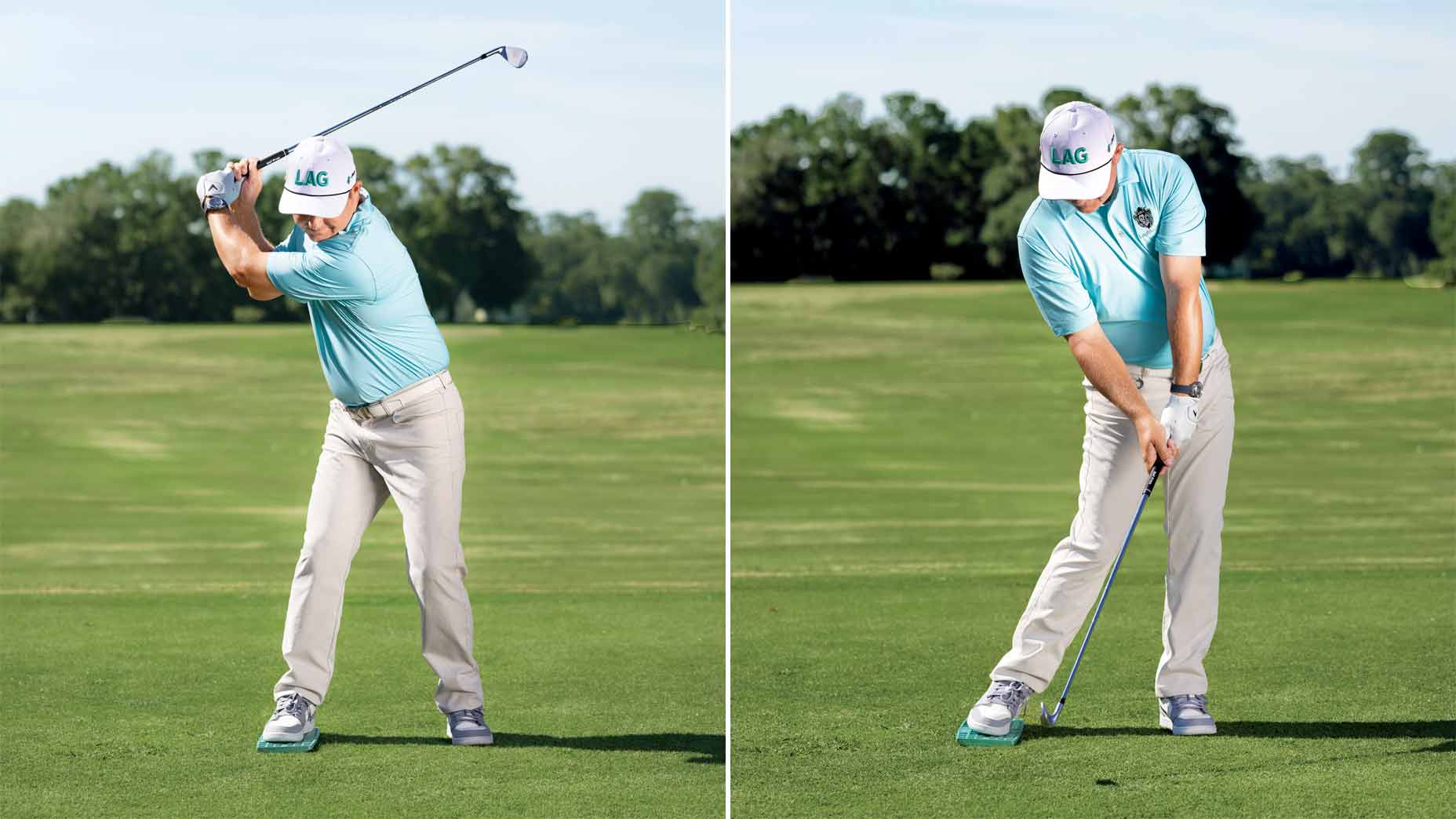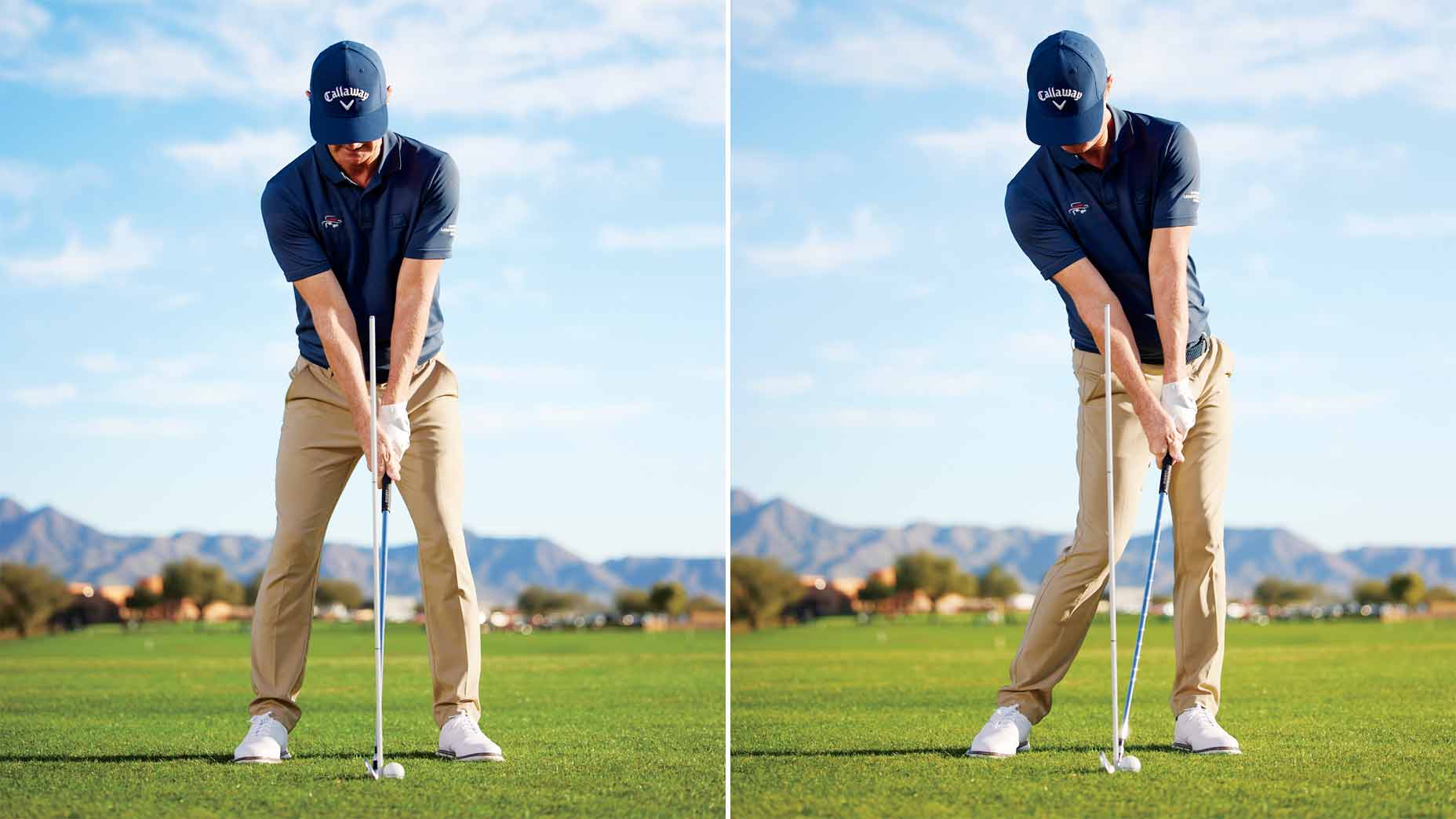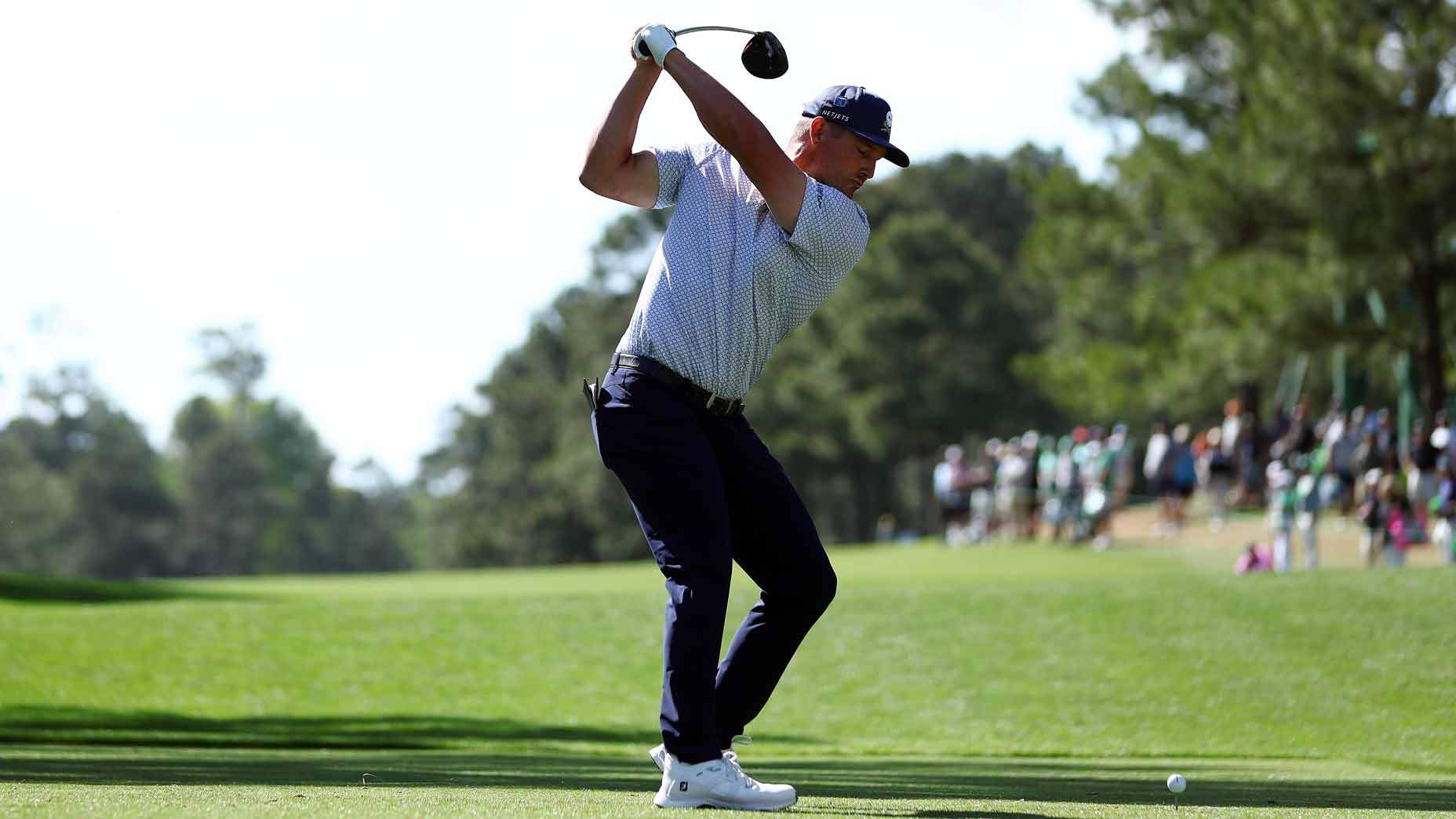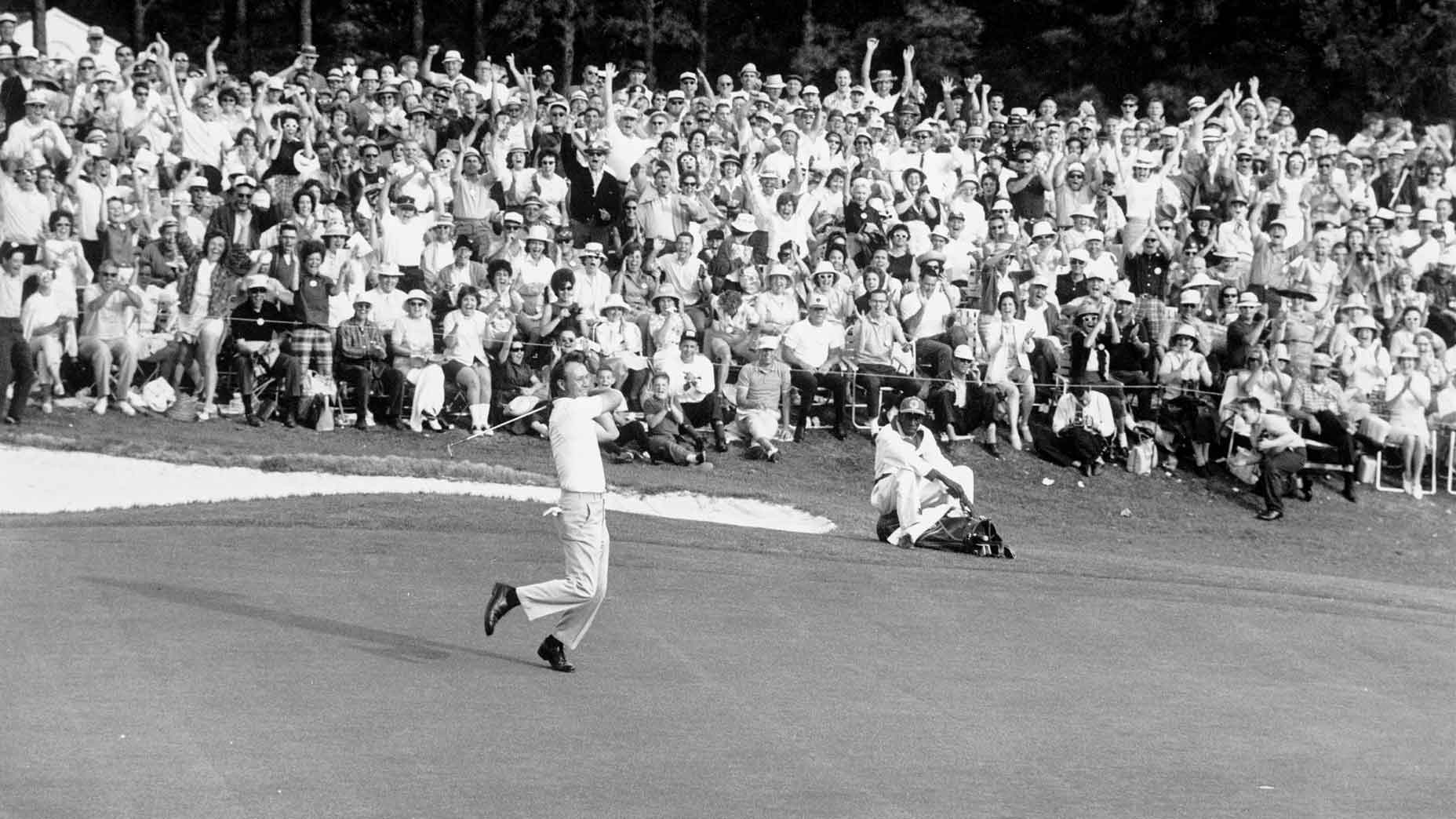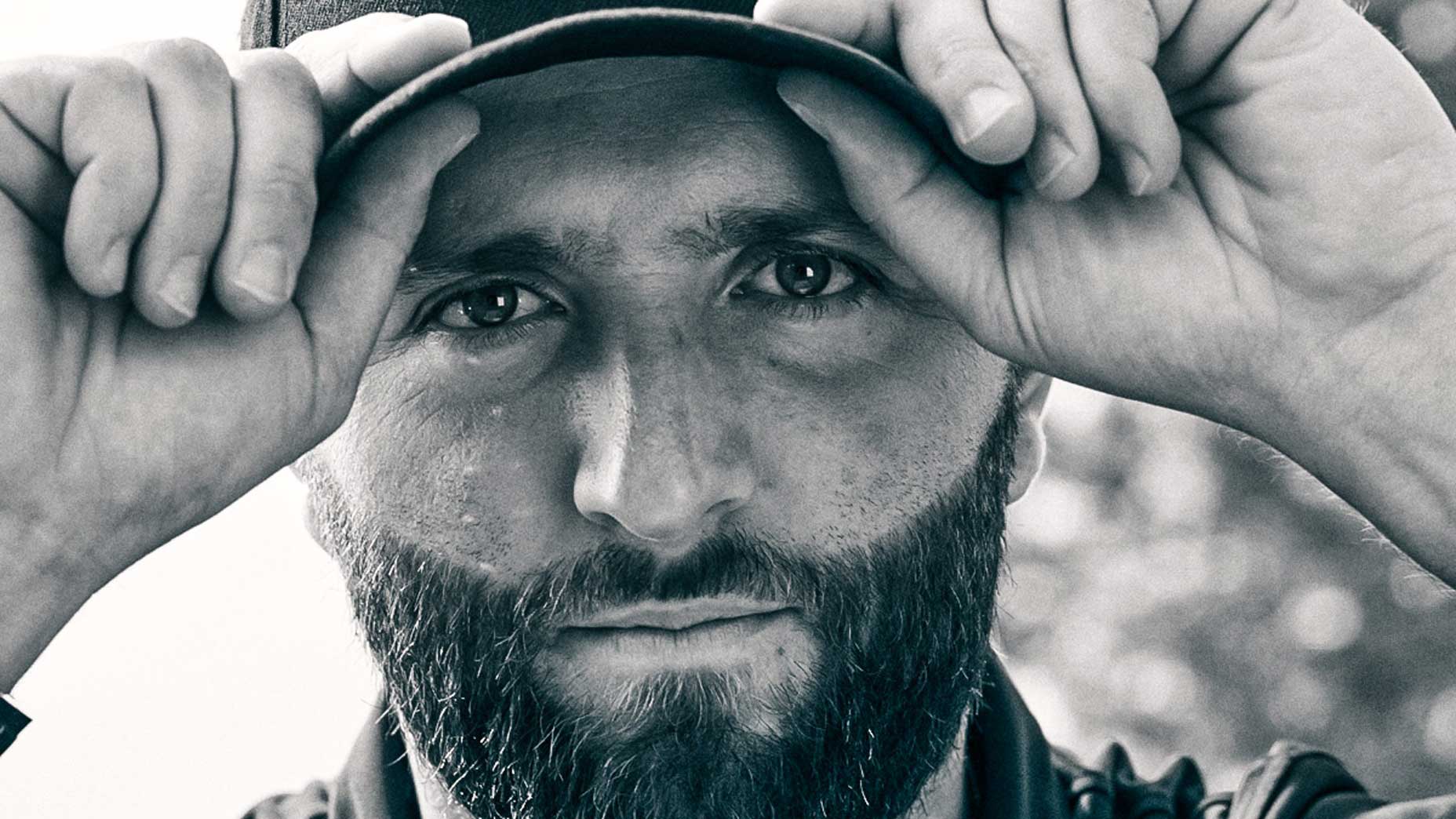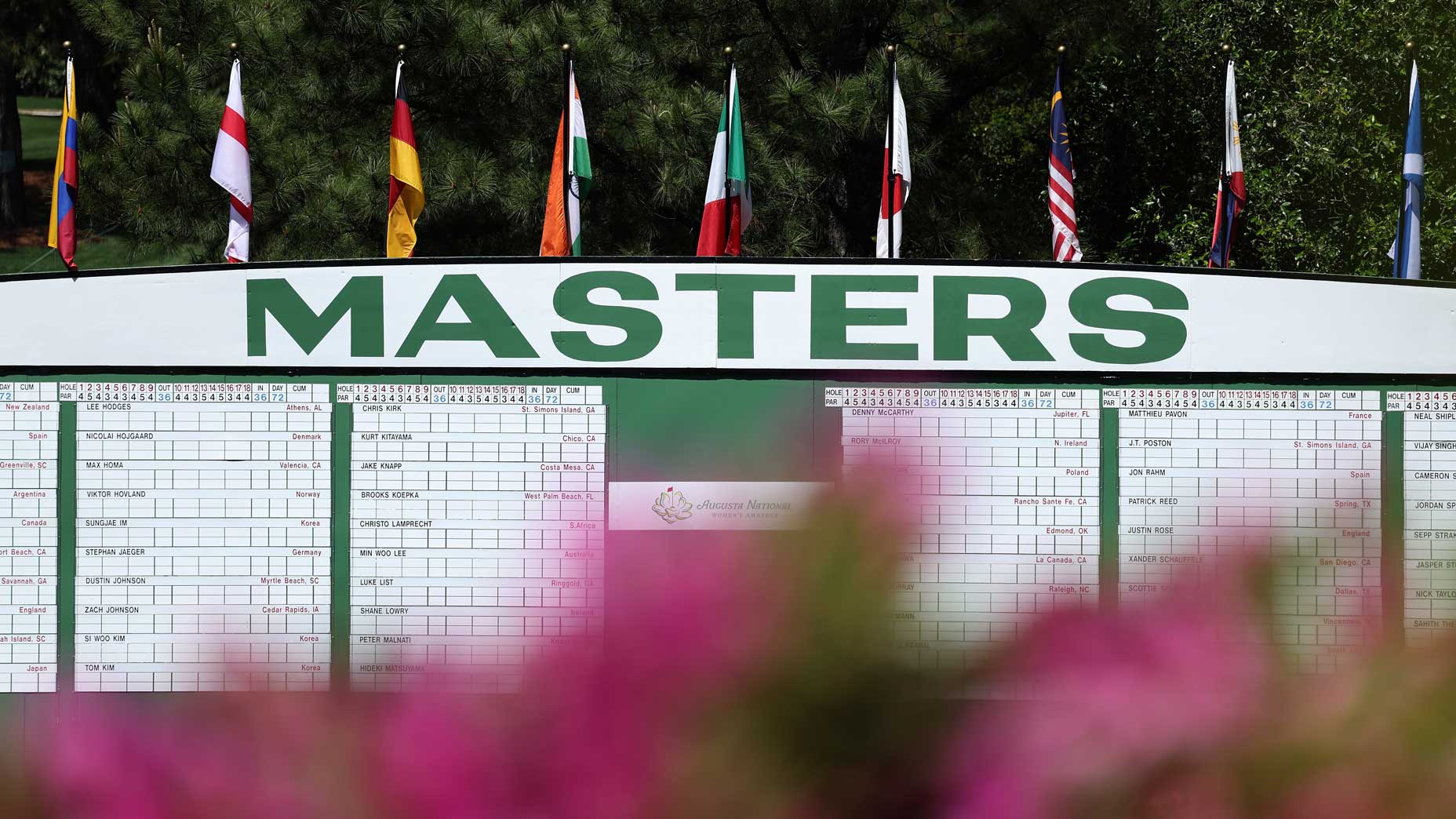How a UK-based collective of golf data scientists is revolutionizing the way pros prepare

The backdrop for Danny Willett’s 2016 Masters win? A big data assist.
Getty Images
Luke Carter grew up wanting to be a golfer, not a golf data scientist. But he was smart enough to know that getting to a zero handicap — which he did — wasn’t up to scratch for getting a tour card.
Still wanting a career in the field, he studied Sports Technology at England’s Loughborough University, spent a year interning as a project engineer at PING, then finished his degree and found a dream job as a quantitative analyst for the London-based sports analytics firm now known as Twenty First Group — which has since played a part in some major triumphs. (How big a part? They could probably define it within +/– 1 percent.)
Here’s his take on the exploding field of data-driven golf analytics and coaching.
Q: How do data coaches work with pro golfers?
A: The work is extremely varied and continuously changing with the introduction of new data and the ever-increasing need and want for performance statistics. With individual players, the focus of our work is: 1) ensuring the player has the knowledge to execute and perform to the best of their ability in the present, and 2) enabling the player to measurably improve their skill level with data-driven practice. The first point is mainly delivered in the form of weekly course guides.
Within these guides, we inform the player’s team how they should best attack the golf course to maximize their potential. This first involves understanding the individual player’s game and assessing their key strengths and weaknesses. Secondly, we use historical data collected at a given golf course to analyze the highest areas of importance on each hole to create a logical and optimized strategy. The course guides we produce for players are bespoke to that individual and help form their strategy for the week in the hopes that an extra stroke or two saved will propel them up the leaderboard.
Q: Are some numbers inherently important, or is it always a case-by-case basis?
A: Again, our weekly course guides are built for each player individually. Depending on their style of play and their strengths and weaknesses, our guides will adapt how each player sees the course with bespoke areas of potential gains and losses. In general, the best way to understand the performance attributes of players and courses is Strokes Gained. The fact that Strokes Gained can be applied at a shot level allows us to drill as deep as we want into a player’s game. For example, if you just look at Strokes Gained Approach as a total, a player may be performing at the field average — but, as soon as you break that down into distance buckets or clubs, you realize they’re actually losing strokes with, say, their short irons. That’s the kind of targeted information we’re trying to get to players.
It’s almost impossible to improve without knowing where you’re losing strokes. The key is to ensure you have targeted practice.
Q: Do you use only Tour stats, or are there others?
A: We delve much deeper than the stats produced by the Tour. We’ve created our own Strokes Gained baseline model, which differs from the one created by the PGA Tour. Much of our work involves being predictive — for that, we run real-world simulations of future events to understand the likelihood of certain happenings. We’re especially proud of our “World Super Tour” player ratings, which aim to accurately quantify the skill level of every golfer who has played on tours recognized by the OWGR or WAGR systems — and now LIV as well. We have the same rating model applied across women’s golf to rank the skill level of pro golfers who have played on the LPGA, LET, KLPGA or JLPGA tours. These rating models allow us to predict the outcome of holes, rounds, tournaments, seasons, as we have done and continuously do on the major tours.
Q: Do you tend to work with the player’s instructor or directly with the player?
A: It depends on the player and the structure of their team. Some players have a large team and are lucky enough to have a performance coach, who’d generally be the person we’re in contact with the most. Others have a smaller team, and/or rely more on their caddie to engage with the data side of things. Either way, we encourage as much communication as possible to make the most of the information.
Q: Your company has also consulted for the European Ryder Cup team and Presidents Cup International team. How does that work differ?
A: Our work with teams tends to be more predictive. We start by providing the teams with a simple way to view the probability of each player making the team, alongside a detailed overview of each player’s game and current skill level. Our player performance analysis is agnostic of tours and can therefore easily be compared across worldwide tours, such as the PGA Tour and DP World Tour. This is crucial to be able to compare players’ skill levels and their key strengths and weaknesses.
As the event gets closer, we give the captains detailed player performance information to help them choose wildcard/captain’s picks. This information includes the basics, such as player skill level, skill consistency, skill level under pressure and key strengths and weaknesses. On top of that, we provide information on course fit and team fit ratings. These aim to assess how the addition of each player to the team would benefit the team’s overall ability to win the cup.
Once the team has been selected, we evaluate the predicted performance of every possible pairing in four-ball and foursomes to help the captains pick the most optimized team in each session. Psychology and player personalities obviously play a big role here. For this, the captains rely on a third party for information on how each player is expected to gel with another player.
Q: What are your favorite success stories?
A: Our biggest success story as a company is definitely Danny Willett’s win at the 2016 Masters, where a combination of longer-term player performance analytics in the run-up to the event and course-based analytics on tournament week were our key outputs. Working with Team Europe at the Ryder Cup and the International team at the Presidents Cup, there were several great stories of how data played a role in improving individual and team performance. We had a few instances of players asking how and why the model simulations show that they play best with certain players. In foursomes particularly, where we help decide which player will tee off first in each pairing, players were keen to know why the data suggested this or that. Once we explained our methodologies and why the results reflected what they did, they were completely behind the decision — at least to our faces!
deWiz Golf Swing Modifier
Q: What’s the next big thing in golf data?
A: Launch monitor data has become an important part of players’ practice routines and provides key feedback in terms of dynamic performance. In-play Strokes Gained statistics allow us to tell a player a specific area that requires improvement, but it doesn’t let us tell the player exactly why they aren’t performing well or how to improve. That’s because Strokes Gained and other traditional on-course statistics are outcome-based and input-based — they summarize where a shot ended up, not how it got there. Including launch monitor data into a pro’s practice regime lets us get even more targeted in terms of their practice and allows their coaches to evaluate performance from practice sessions too.
Q: What have you learned from golf stats that would be most helpful for everyday players?
A: That it’s almost impossible to improve without knowing where you’re losing strokes. There are many apps available that allow you to track your shot-by-shot on-course performance — I use myTM+ — as well as driving ranges with launch monitor devices that aggregate your performance in terms of Strokes Gained. The key point is to ensure you have targeted practice. The worst thing you can do is to practice without a plan and measurable goals.


